- Clone
- APA1/1 (See other available formats)
- Regulatory Status
- RUO
- Other Names
- CD3e molecule, epsilon (CD3-TCR complex), CD3e antigen, CD3 epsilon
- Isotype
- Mouse IgG1, κ
- Ave. Rating
- Submit a Review
- Product Citations
- publications
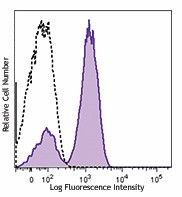
-

Human peripheral blood lymphocytes were fixed and permeabilized with 70% ethanol, followed by intracellular staining with CD3e (clone APA1/1) APC (filled histogram) or mouse IgG1, κ APC isotype control (open histogram).
| Cat # | Size | Price | Quantity Check Availability | Save | ||
|---|---|---|---|---|---|---|
| 362707 | 25 tests | 82€ | ||||
| 362708 | 100 tests | 215€ | ||||
The CD3ε chain of the CD3-TCR complex is a type I membrane protein that undergoes conformational change following ligation of the TCR-CD3 complex. This conformational change leads to exposure of the proline rich sequence in CD3ε and results in recruitment of Nck. It is expressed by all mature T cells and forms a heteromeric complex with CD3 α/β or γ/δ and ζ chains. It is important in T cell development, and deficiency of this gene has been associated with severe immunodeficiency.
Product DetailsProduct Details
- Verified Reactivity
- Human, Mouse
- Antibody Type
- Monoclonal
- Host Species
- Mouse
- Immunogen
- Purified denatured CD3 proteins from human thymus
- Formulation
- Phosphate-buffered solution, pH 7.2, containing 0.09% sodium azide and BSA (origin USA)
- Preparation
- The antibody was purified by affinity chromatography and conjugated with APC under optimal conditions.
- Concentration
- Lot-specific (to obtain lot-specific concentration and expiration, please enter the lot number in our Certificate of Analysis online tool.)
- Storage & Handling
- The antibody solution should be stored undiluted between 2°C and 8°C, and protected from prolonged exposure to light. Do not freeze.
- Application
-
ICFC - Quality tested
- Recommended Usage
-
Each lot of this antibody is quality control tested by immunofluorescent intracellular staining with flow cytometric analysis. For flow cytometric staining, the suggested use of this reagent is 5 µl per million cells in 100 µl staining volume or 5 µl per 100 µl of whole blood.
- Excitation Laser
-
Red Laser (633 nm)
- Application Notes
-
Clone APA1/1 recognizes an activation-dependent intracellular epitope of the CD3ε chain. Additional reported applications (for the relevant formats of this clone) include: immunofluorescent staining of paraformaldehyde fixed sections1, in vivo tracking of T cells 2, and Western blotting3. The LEAF purified format is recommended for in vivo studies.
- Application References
-
- Salmerón A, et al. 1991. J. Immunol. 147:3047. (ICFC, IF)
- Risueño RM, et al. 2005. Blood. 106:601. (IF, in vivo tracking, Mouse Reactivity)
- Risueño RM, et al. 2008. PLos One. 3:e1747. (WB)
- Gil D, et al. 2005. J. Exp. Med. 201:517.
- Risueño RM, et al. 2006. Proc. Natl. Acad. Sci. USA. 103:9625.
- RRID
-
AB_2564401 (BioLegend Cat. No. 362707)
AB_2564402 (BioLegend Cat. No. 362708)
Antigen Details
- Structure
- Type I membrane protein, part of the TCR-CD3 complex. 207 amino acids, predicted molecular weight of 23 kD.
- Distribution
-
Mature T cells.
- Function
- Important role in T cell development and in linking antigen recognition with intracellular signaling pathways.
- Interaction
- Interacts with Nck.
- Ligand/Receptor
- MHC antigen.
- Cell Type
- T cells
- Biology Area
- Cell Adhesion, Cell Biology, Immunology, Signal Transduction
- Molecular Family
- CD Molecules, TCRs
- Antigen References
-
1. Savage PD, et al. 1988. Cytogenet. Cell. Genet. 49:289.
2. DeJarnette JB, et al. 1998. Proc. Natl. Acad. Sci USA. 95:14909.
3. Wang B, et al. 1999. J. Immunol. 162:88.
4. Szymczak AL, et al. 2005. J. Immunol. 175:270.
5. Borroto A, et al. 2014. J. Immunol. 192:2042. - Gene ID
- 916 View all products for this Gene ID
- UniProt
- View information about CD3epsilon on UniProt.org
Related Pages & Pathways
Pages
Other Formats
View All CD3ε Reagents Request Custom Conjugation| Description | Clone | Applications |
|---|---|---|
| Purified anti-human/mouse CD3ε (activation epitope) | APA1/1 | ICFC,WB,IHC-P,in-vivo Cell Tracking,ICC,IHC,IP |
| PE anti-human/mouse CD3ε (activation epitope) | APA1/1 | ICFC |
| APC anti-human/mouse CD3ε (activation epitope) | APA1/1 | ICFC |
Customers Also Purchased
Compare Data Across All Formats
This data display is provided for general comparisons between formats.
Your actual data may vary due to variations in samples, target cells, instruments and their settings, staining conditions, and other factors.
If you need assistance with selecting the best format contact our expert technical support team.
-
Purified anti-human/mouse CD3ε (activation epitope)
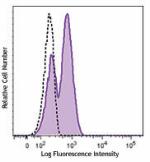
Human peripheral blood lymphocytes were fixed and permeabili... 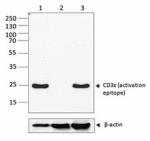
Western blot analysis of extracts from Jurkat (lane 1) and P... 
Human paraffin-embedded tonsil tissue slices were prepared w... 
Human paraffin-embedded spleen tissue slices were prepared w... -
PE anti-human/mouse CD3ε (activation epitope)
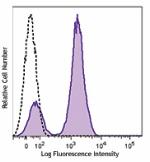
Human peripheral blood lymphocytes were fixed and permeabili... -
APC anti-human/mouse CD3ε (activation epitope)
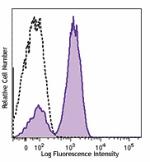
Human peripheral blood lymphocytes were fixed and permeabili...
 Login / Register
Login / Register 










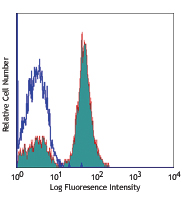
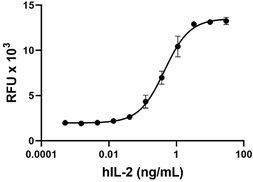

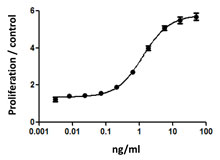



Follow Us